‘I Like How You Think’ is a classroom game kit for 6-9 year olds. With dyslexia being the primary case study, this board game helps children with learning differences develop confidence and self-worth in a group setting. When children are diagnosed with a learning difficulty, it is natural for parents to worry about how it will affect their school grades. However, there is often little consideration given around the emotional effects that could impact on the psychological growth of these children as they develop. Through game theory, storytelling, inclusion strategies and play, teachers can use ‘I Like How You Think’ to create positive experiences for children with learning difficulties to feel valued, intelligent and included.
This project is being exhibited at Exposure from the 1-15th of November at Massey:
Research
For 12 weeks I created a brief to execute over the next 12 weeks. This research was centred around neurological differences, particularly dyslexia, and how growing up with these differences affects self-esteem. This research included theoretical research, surveys, interviews, and design sprints. In conclusion I began testing and creating trying to achieve these things:
1. Create a tool which can help improve self-esteem/self-image of dyslexic individuals.
2. Centre the game around strengths, rather than weaknesses.
3. Create these affects with interactive tools, rather than passive tools.
4. Take into account the complex, individual nature of dyslexia and similar learning differences.
Iteration / Exploration
Based on this research I spent 5 weeks exploring different ways in which I could communicate these strengths. This iteration went through three phases
1. Book
Initially I felt that a creative book might be a fitting way of communicating and teaching the strengths of learning differences. However upon a talk with a tutor I realised this was still a passive form of information. I don't want to create a tool that tell's dyslexic individuals what their strengths could be. I want to create experiences in which these individuals can use these strengths and feel proud of themselves. This is when I explored
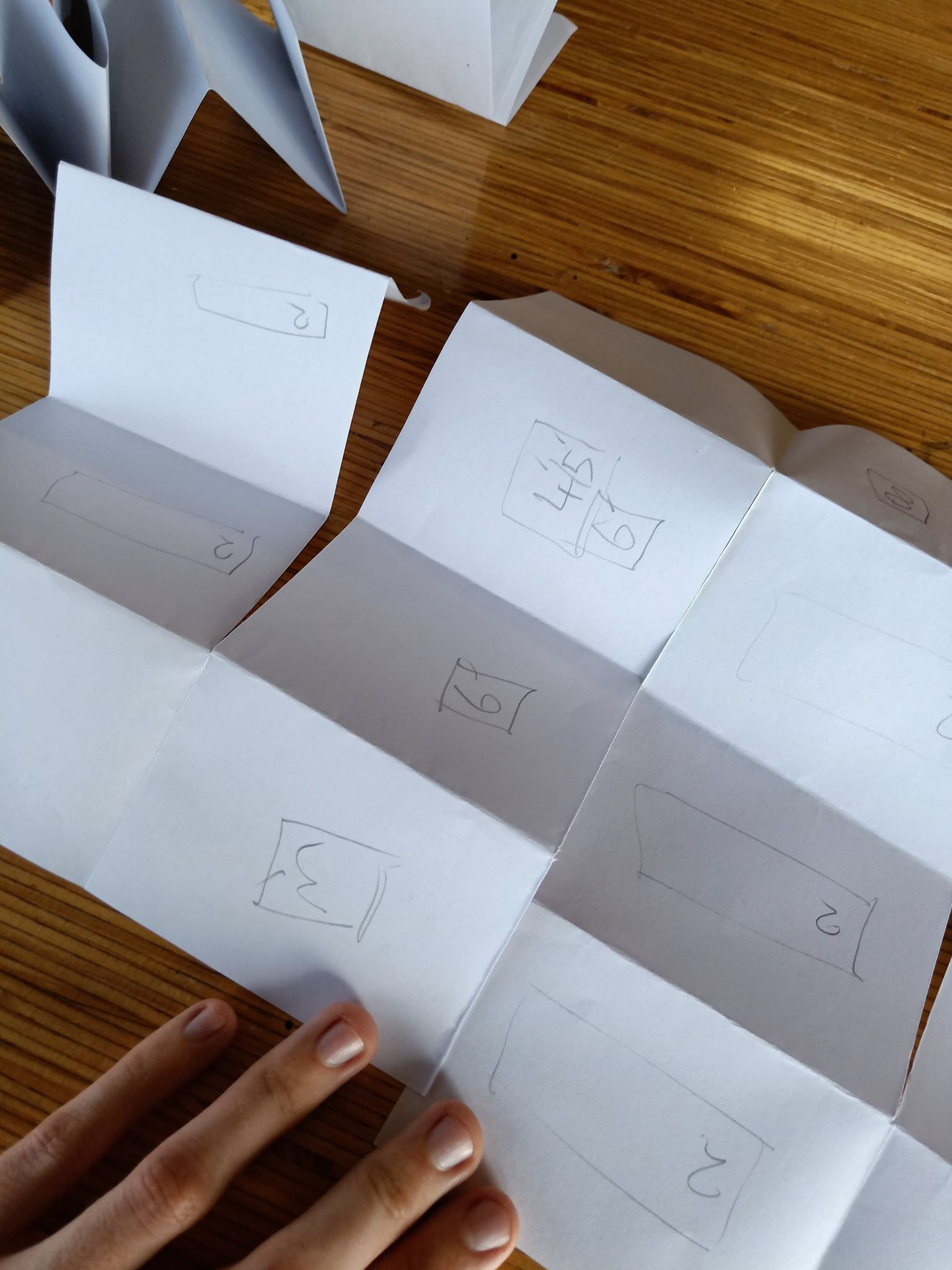

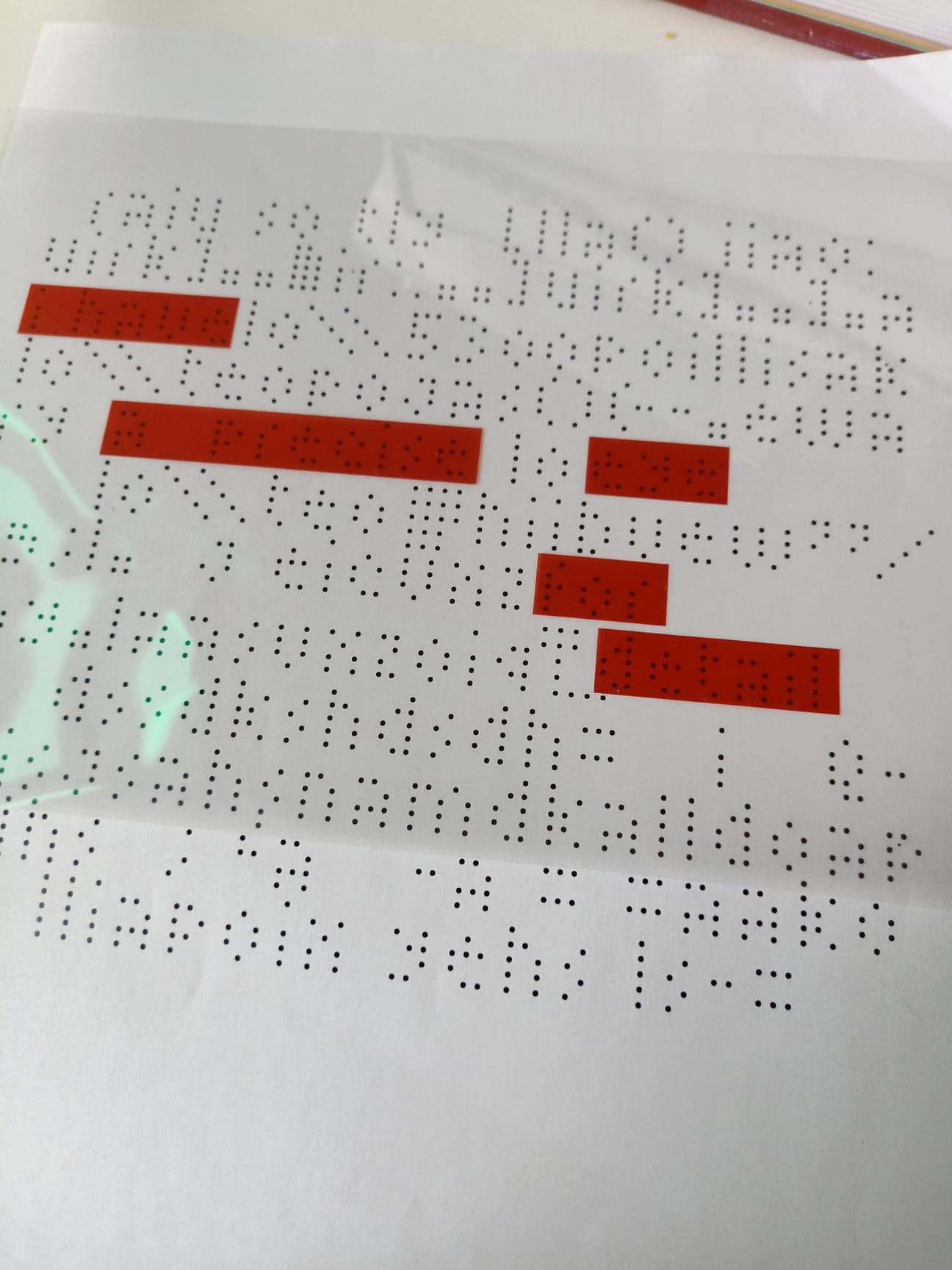
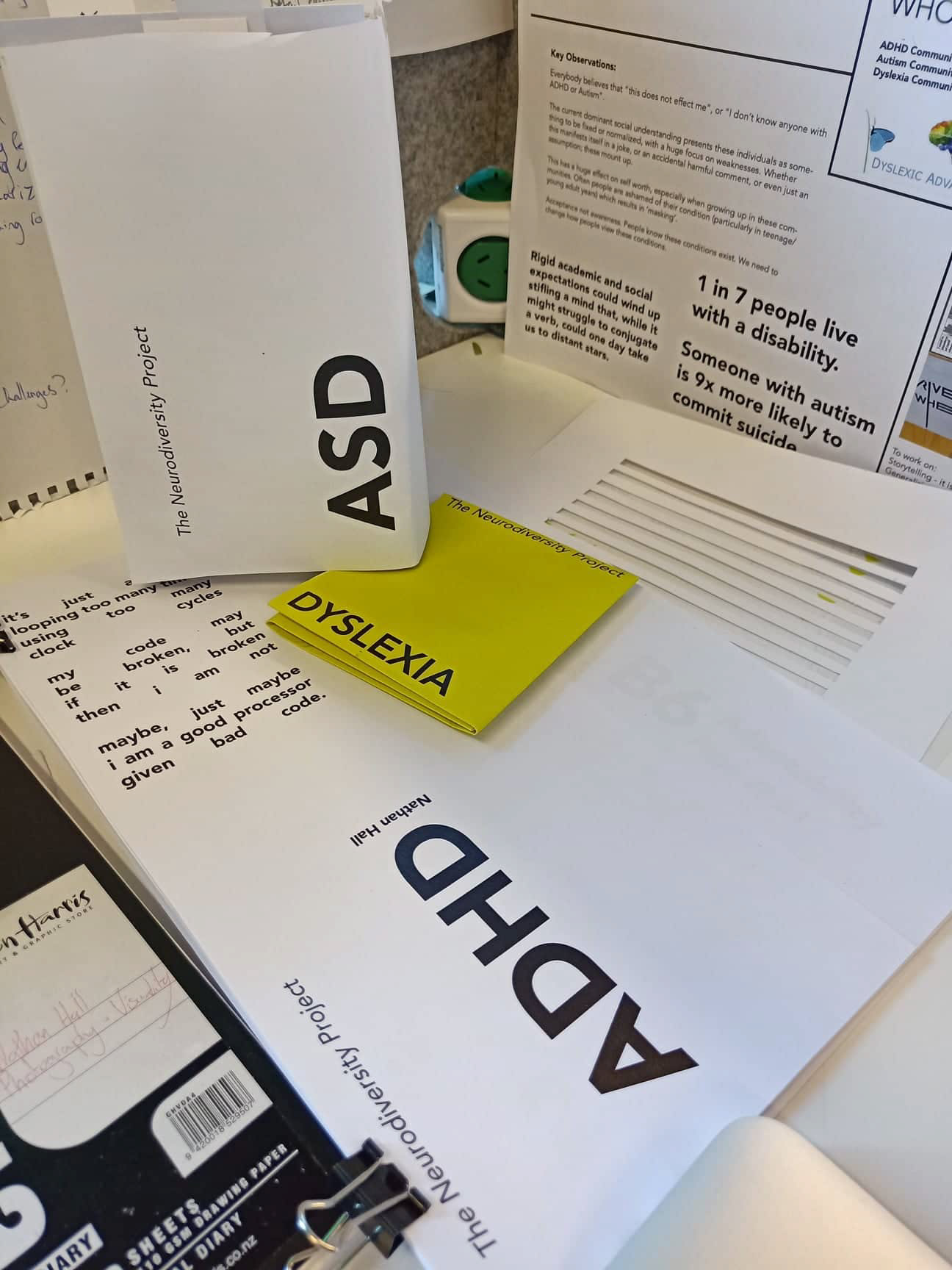


2. Puzzles
This definitely had the interactive element I was missing. Individuals would use a certain skill to find/create characters in a folding matrix. To find 'Creative Kevin' you would have to use creativity, to find 'Big Picture Pete', you would have to see the big picture. This test was hard to get the difficulty right, often this puzzle was just too difficult to solve... So this brought up some more questions as well.
Why would you do the puzzle more than once?
Is this a group activity or solo activity?
If it is a solo activity, is this the best environment for developing confidence?
So this puzzle turned into...
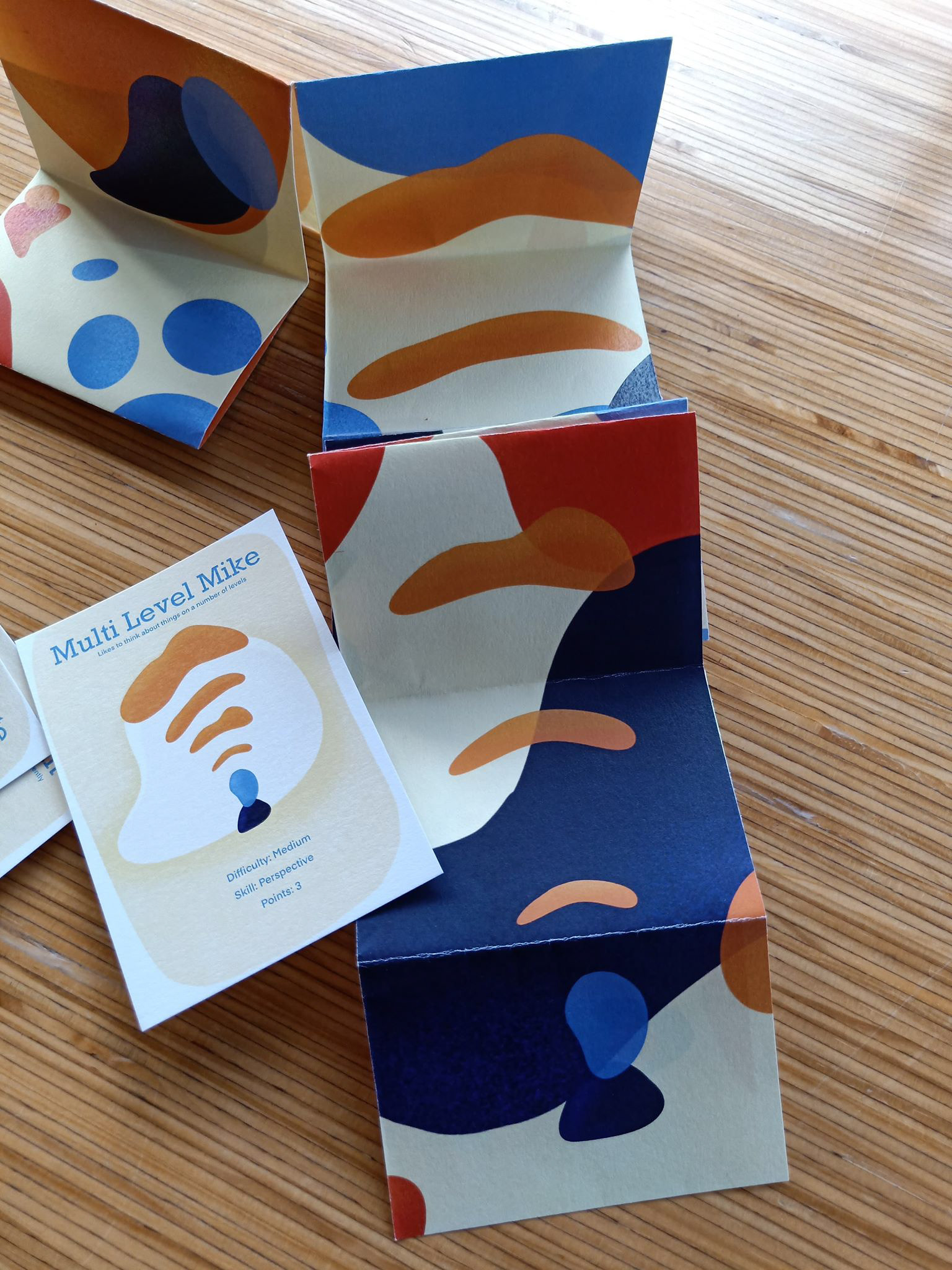
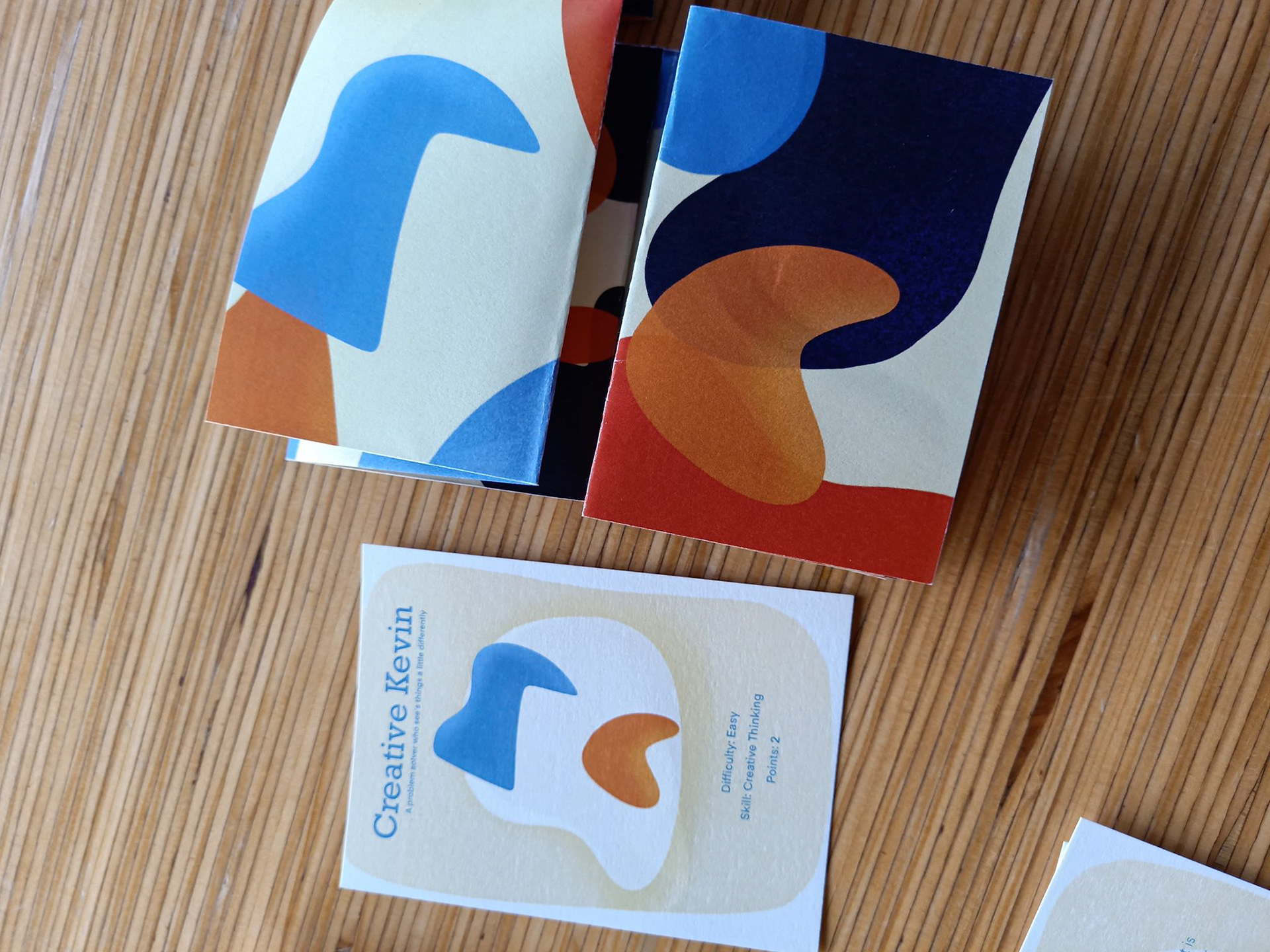
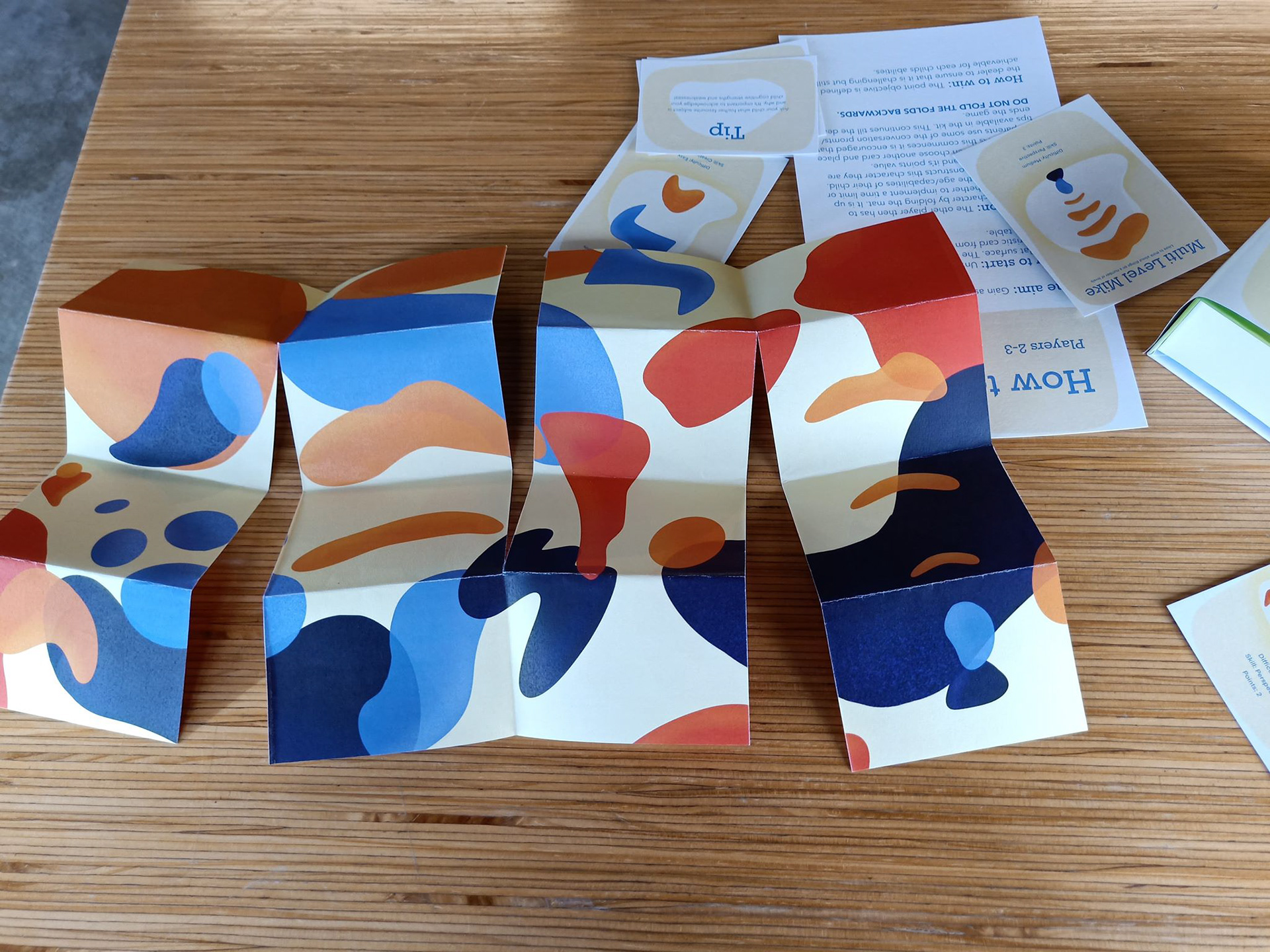

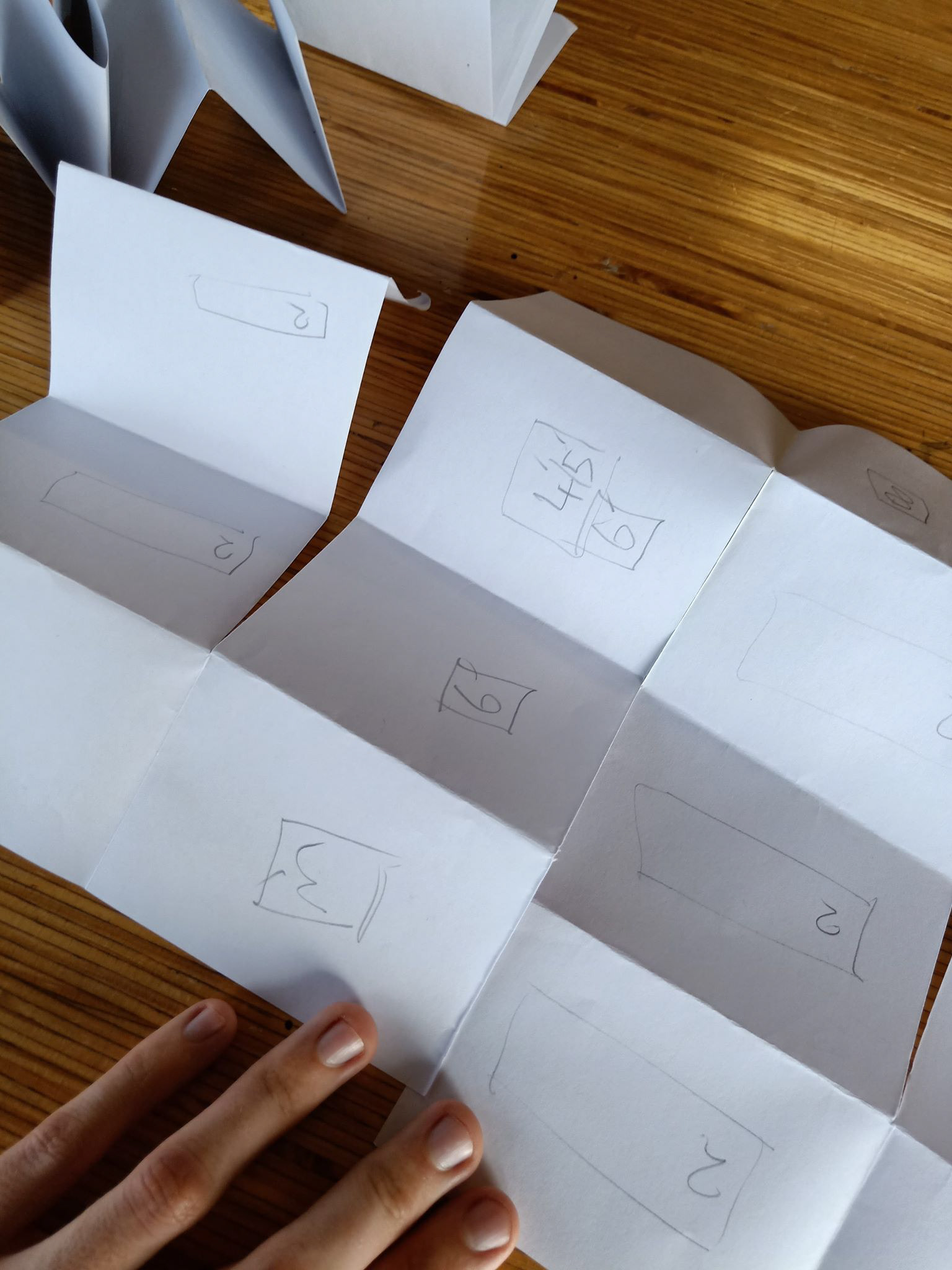
3. A Game
A game turned out to be the perfect solution. This has the interactive elements that a puzzle has, but an underlying social dynamic. While this was more complex to navigate, this is the ideal situation to create confidence building experiences. After experimenting with different game types, creative storytelling stuck out as an collaborative, positive experience, where individuals can play to their strengths and contribute to a common purpose. With appropriate game dynamics and components this could be a confidence building experience for everyone!
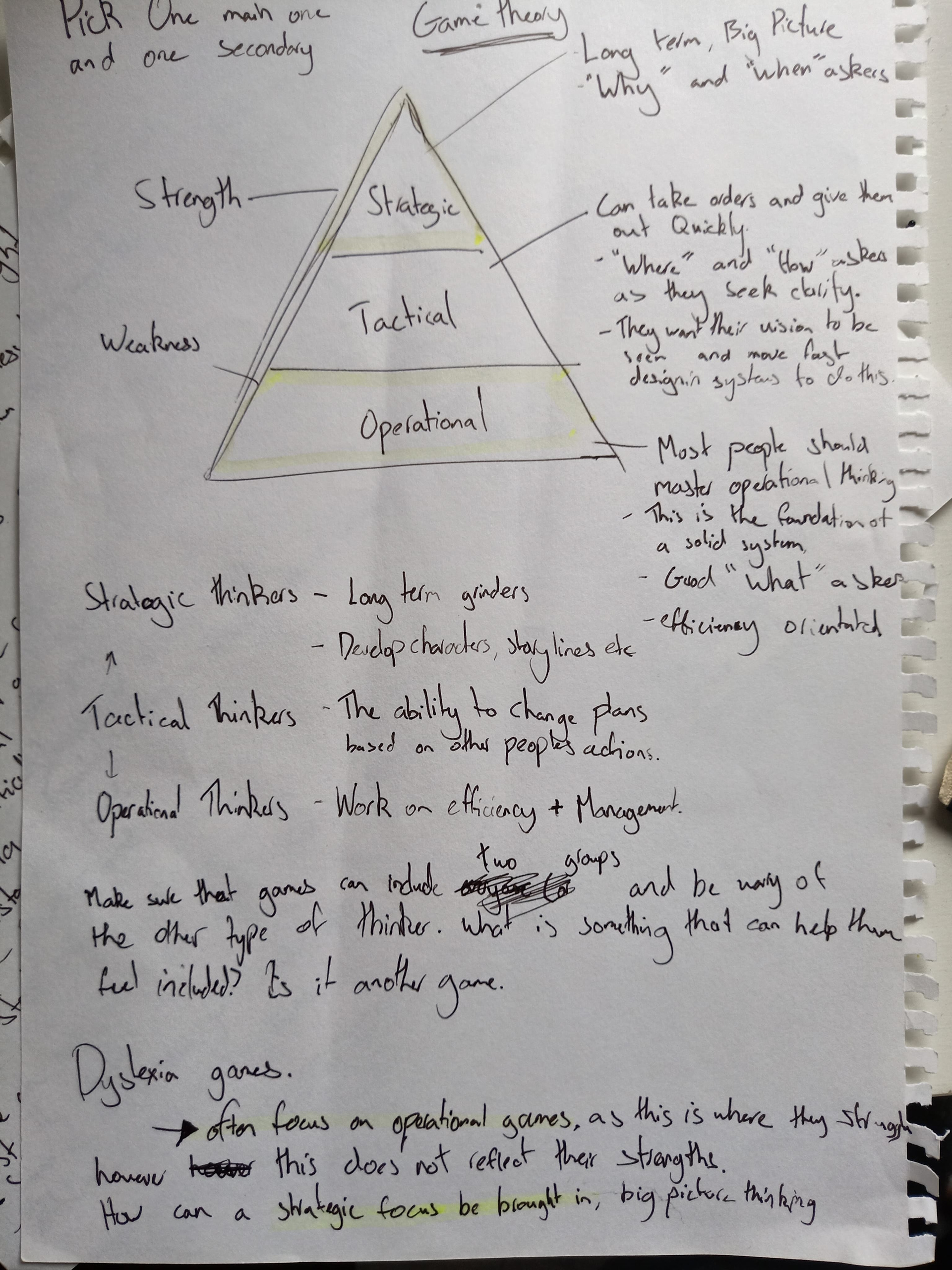

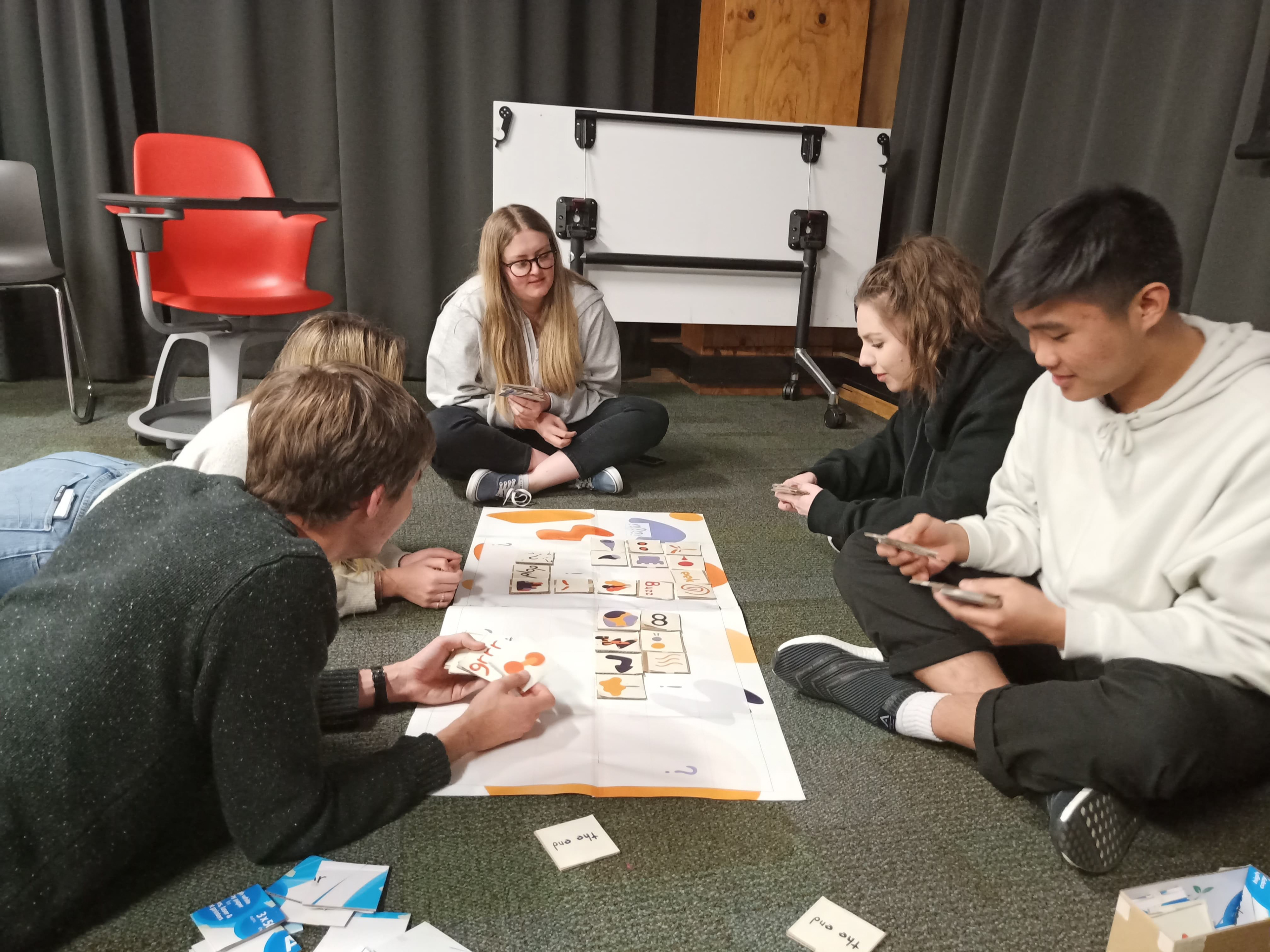
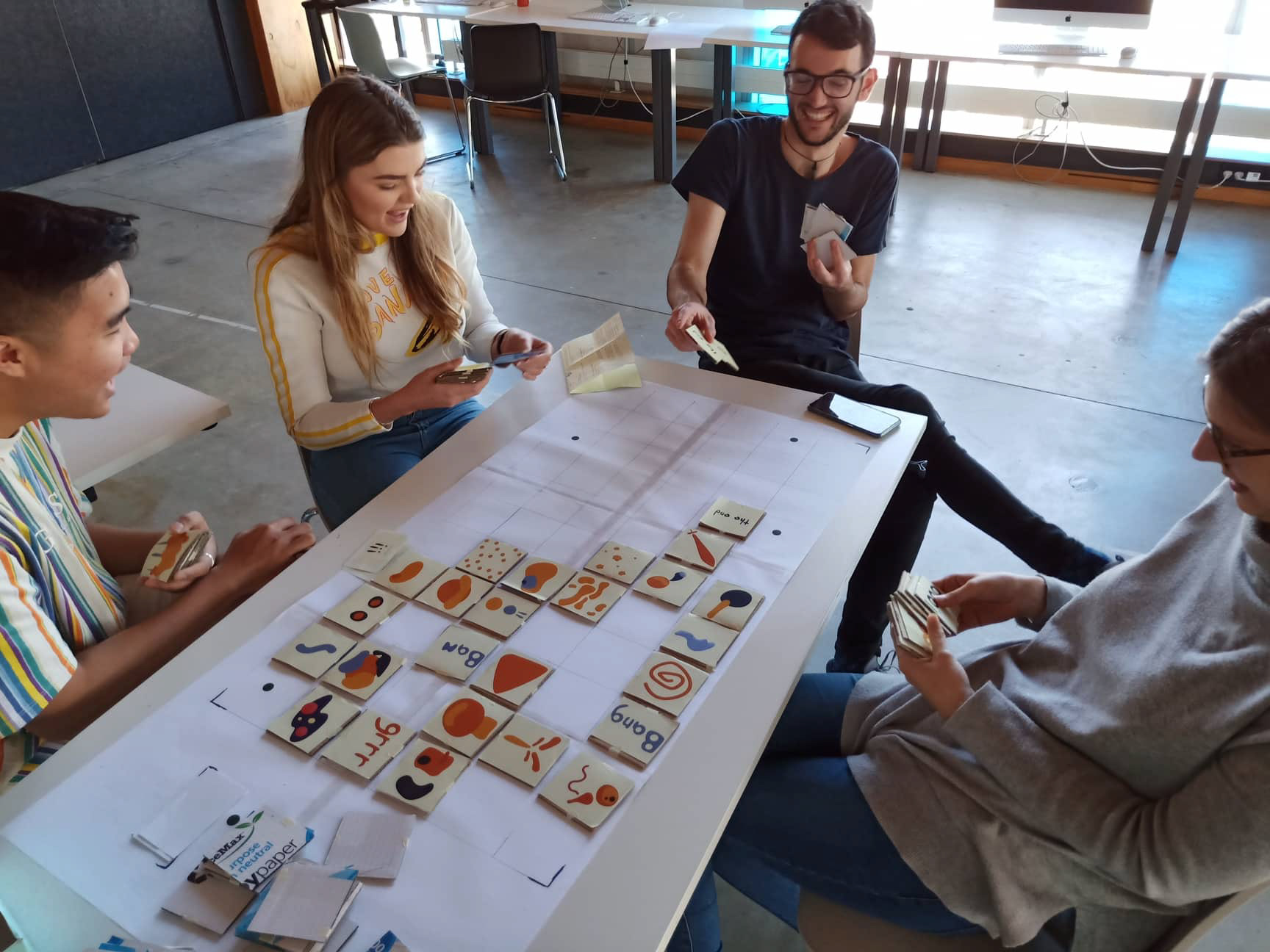
I created the game dynamics from scratch so this took a lot of trial and error. My main inspirations in regards to game play were Cranium, Zolo and Game of Awesome.
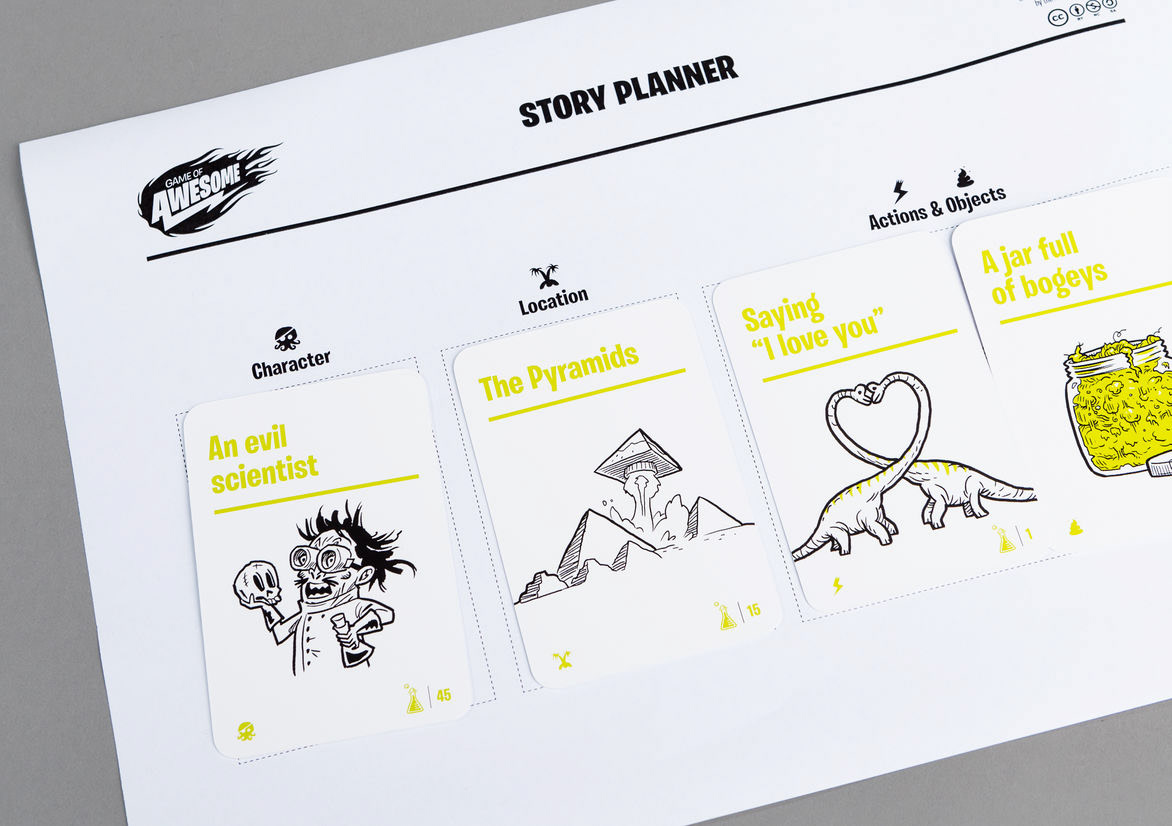
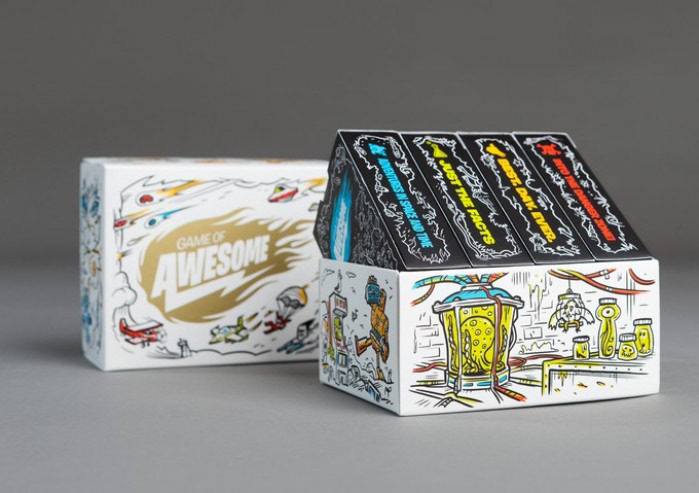
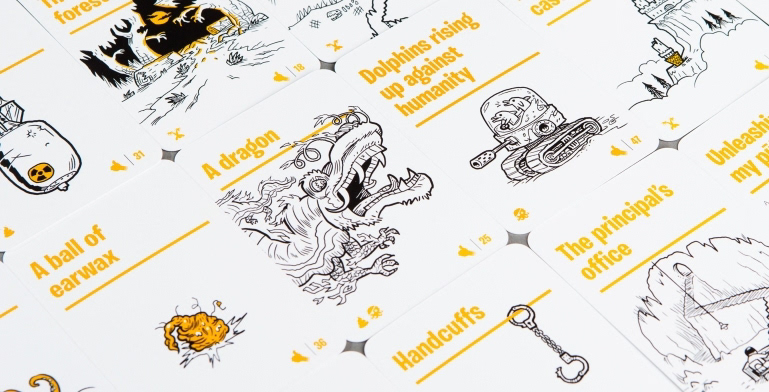
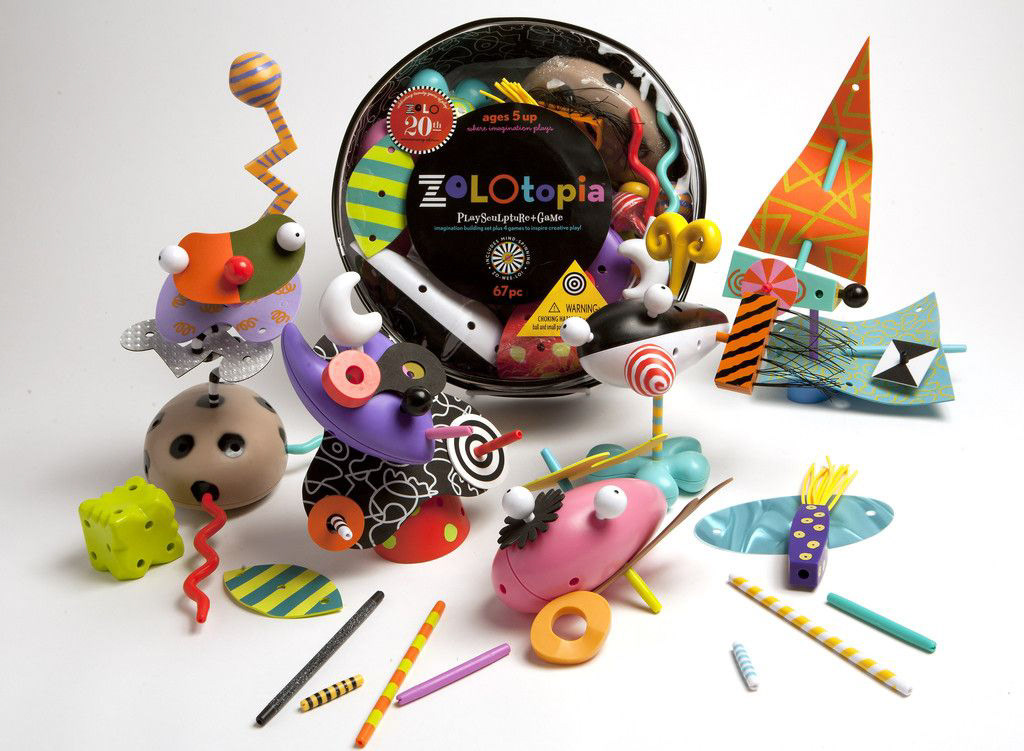
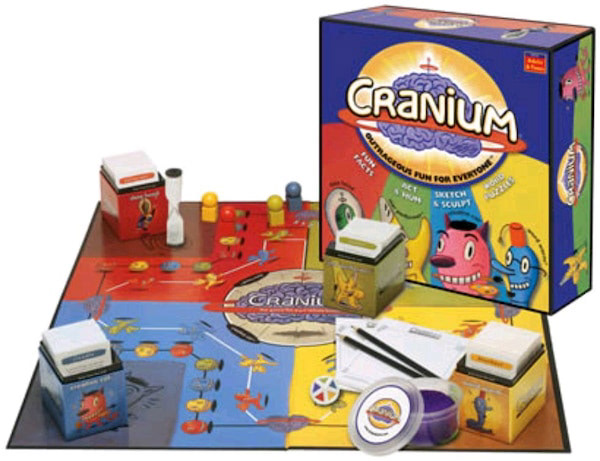
During some of these tests I would implement user personas for people to keep in mind while playing. These personas were divided into three categories:
1. Easy going (No specific needs, social or cognitive)
2. Socially Problematic (social needs, eg: attention seeking)
3. Learning difference (cognitive needs: dyspraxia)
These personas helped to not only imagine individuals journeys, but also the complex social dynamics in a classroom. I only used these personas when looking into social dynamics, and trigger points. I would often not use these when simply trying to figure out game dynamics.
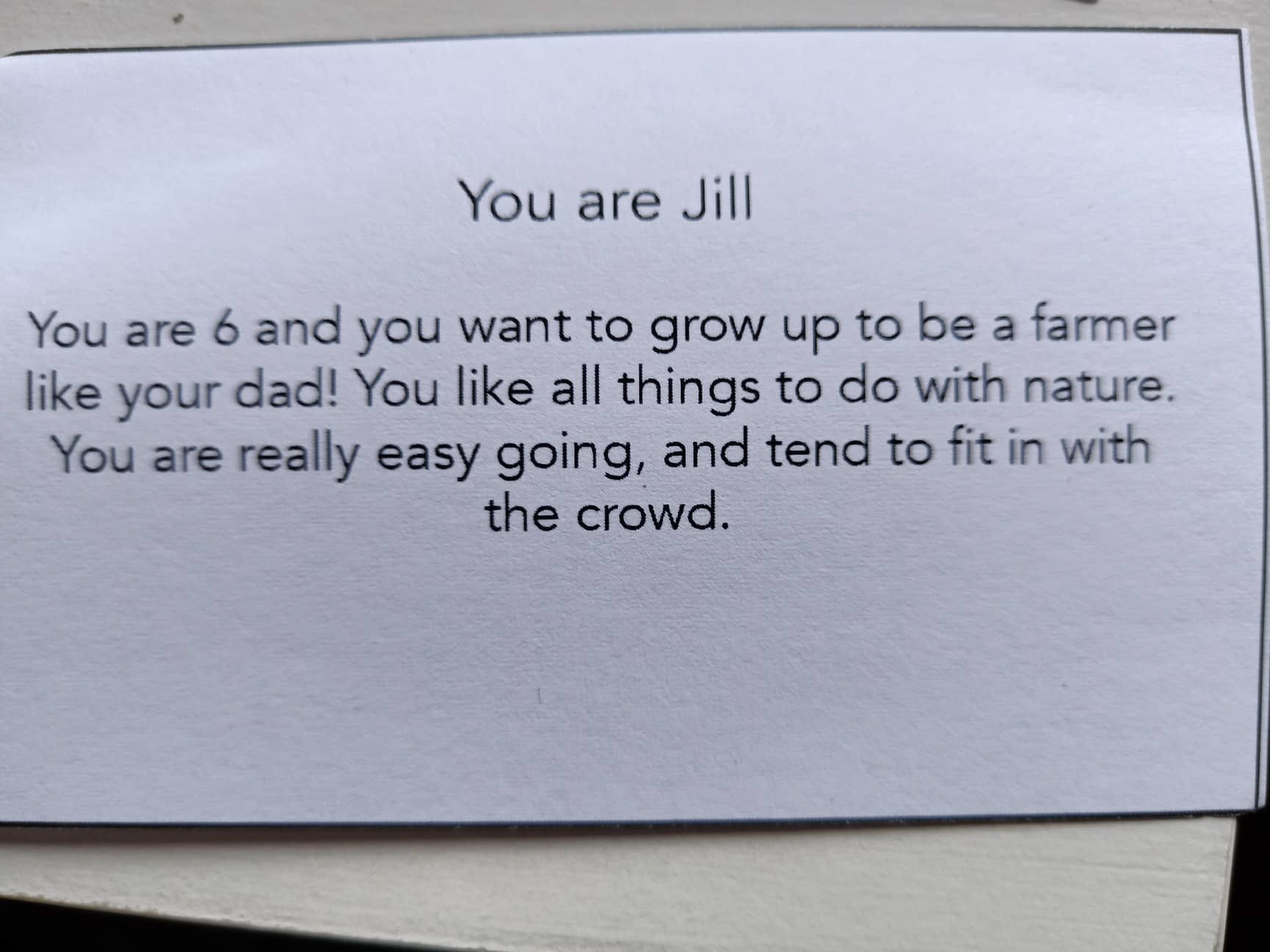
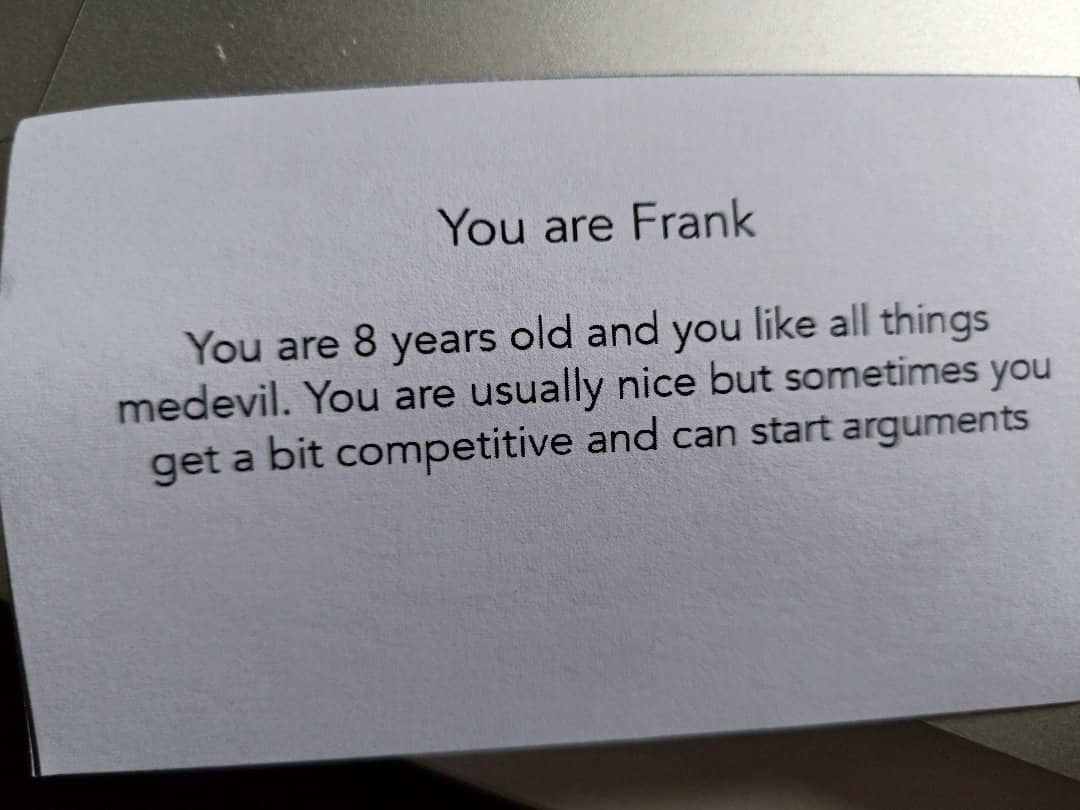
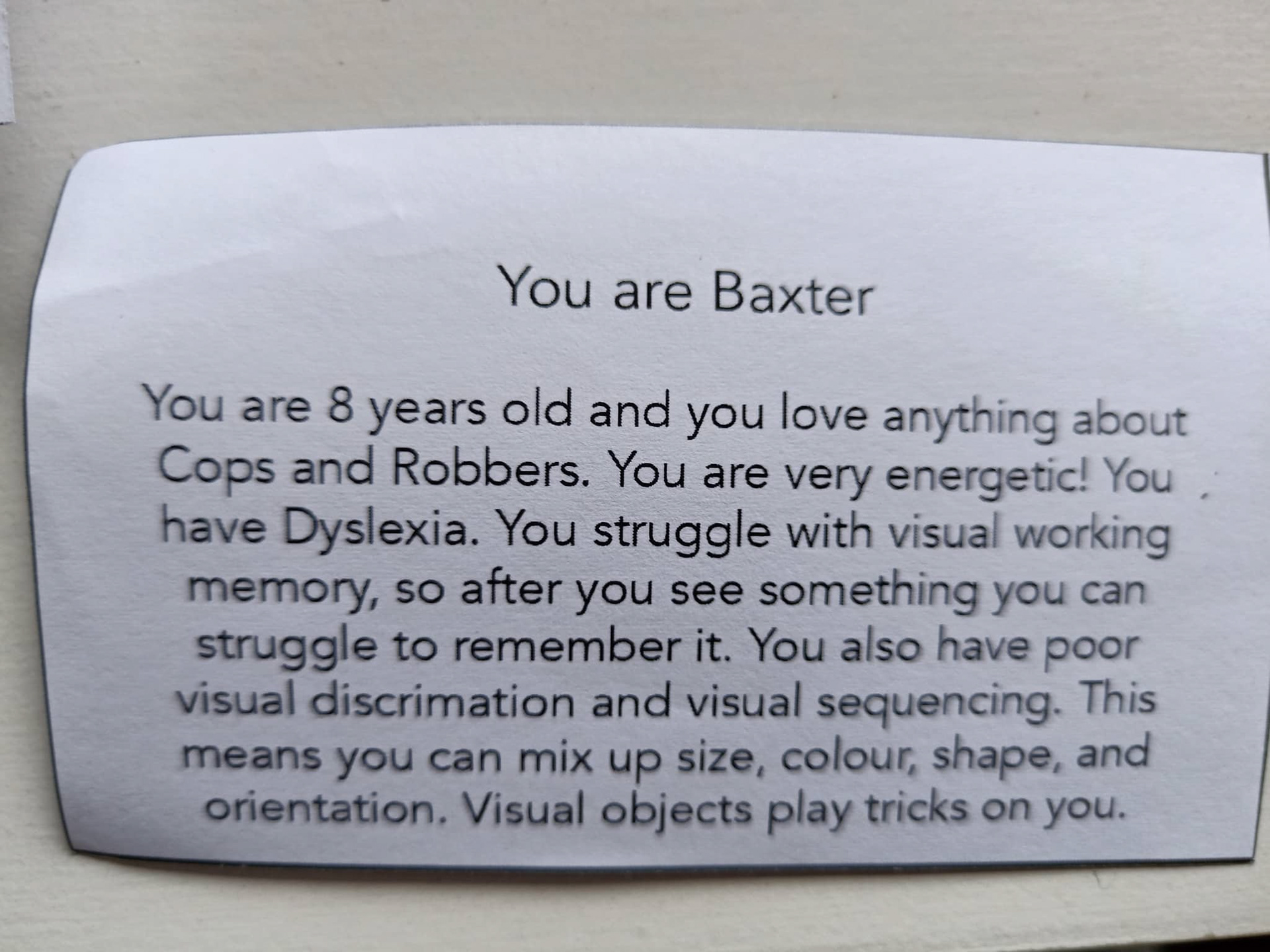
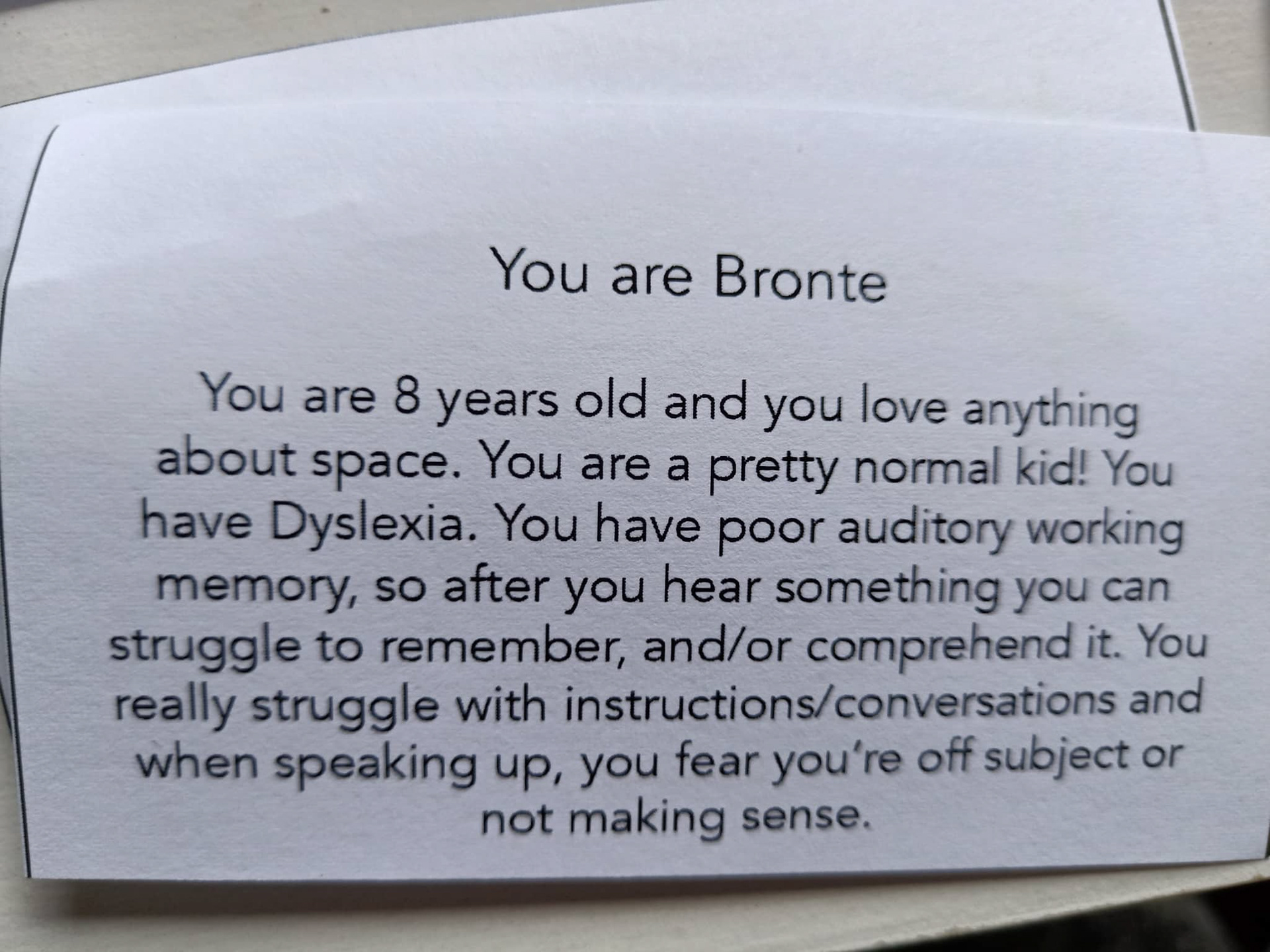
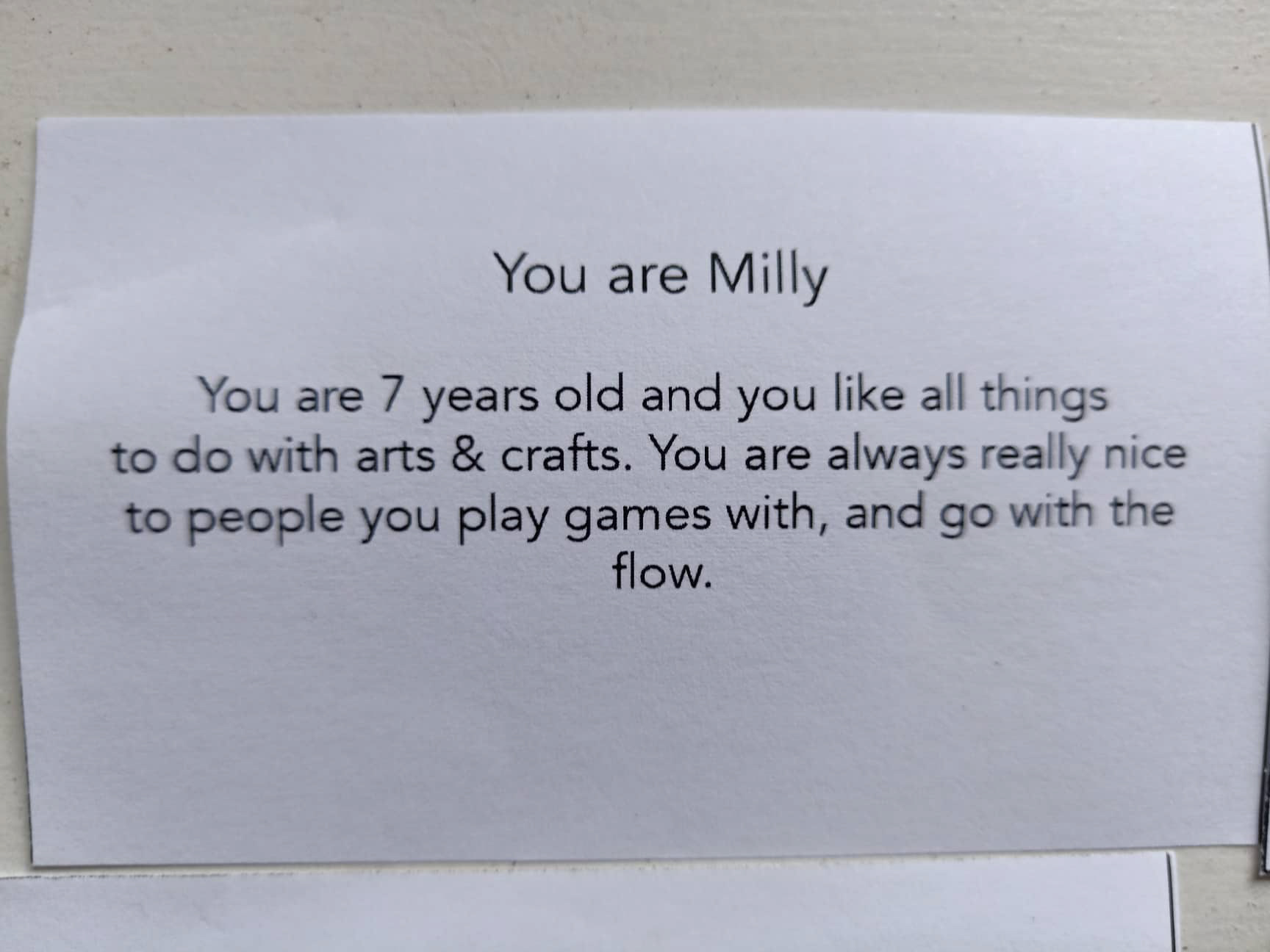
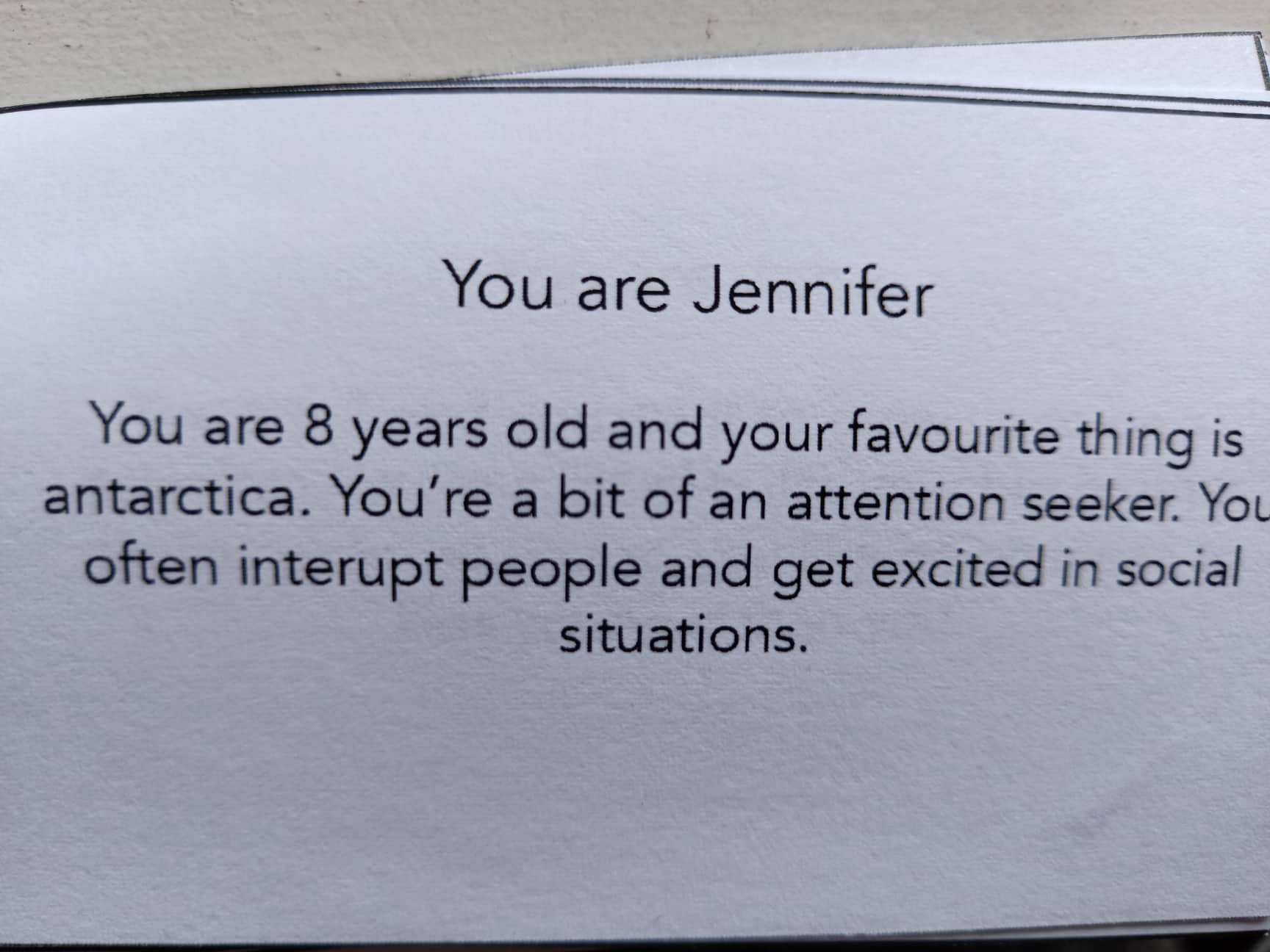
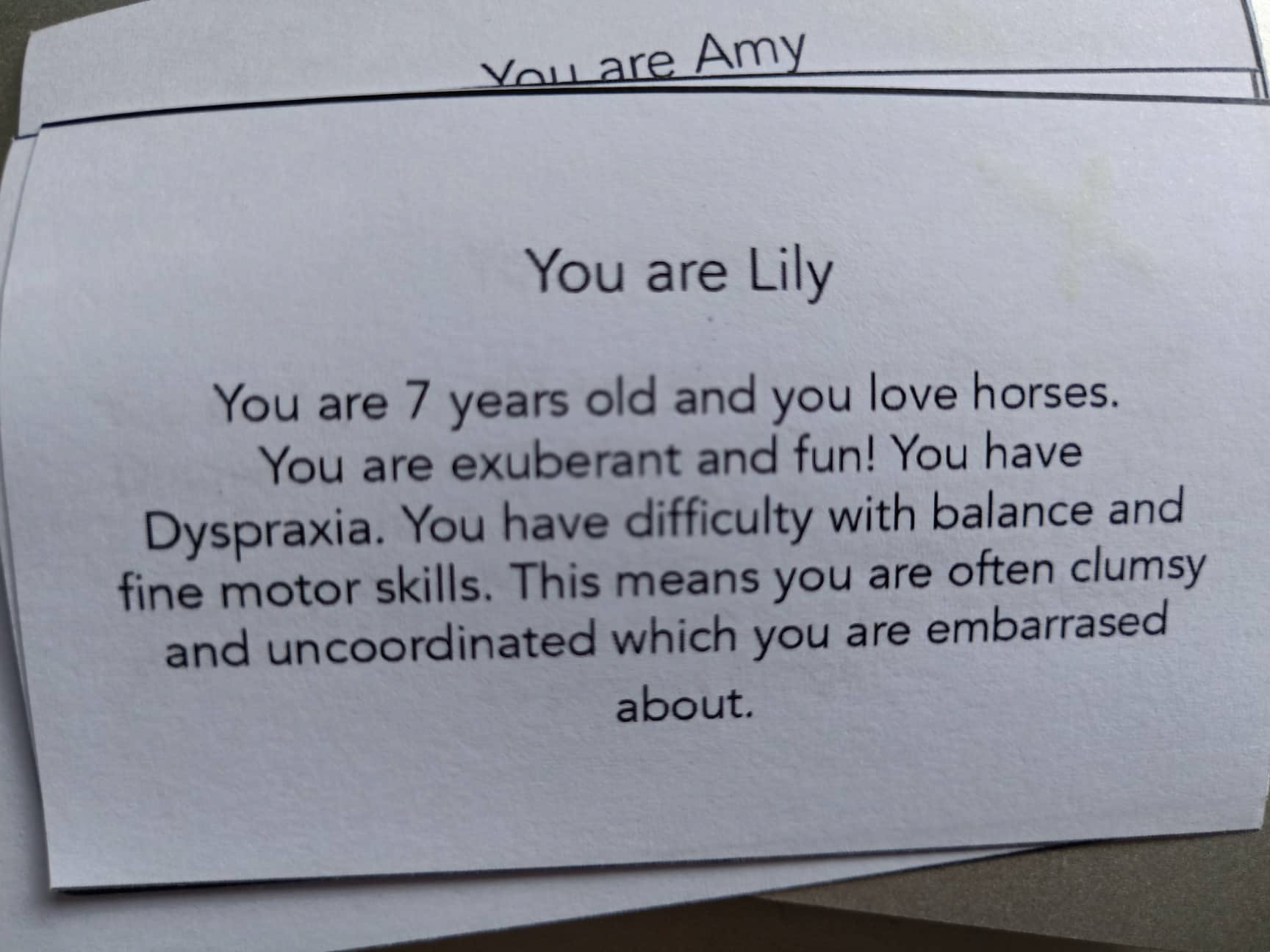
Once I had working game dynamics and a working prototype that I started doing some more concrete user-testing with the appropriate demographic and psychographic. I tested this set with some 6-10 years before getting in contact with the Special Educational Needs Co-oridnator at Wainuiomata Primary School. After a meeting a some discussion we planned a few sessions she could run with her students.
Session 1: Run with 4-6 students, all with learning differences. SENCO will explain the rules of the game she thinks appropriate after reading Teachers Guide. From here she ran a game or two, while implementing tips and ideas from the teachers guide. Asking questions to students as they place, and after game. What did you think of the game, What did you enjoy, What did you find difficult, etc.
Session 2: Run with 4-6 students, 1-2 with learning differences (the lesser confident students who played in the first session). More informal session, note social factors such as: did any awkward situation arise, what happened, how was this resolved? Did the range of pieces put children at ease, or create more to think about.
She video recorded these tests (due to ethical reasons I couldn't be present) and we went over them together. This was extremely insightful, being able to discuss her thoughts on what was happening, as a teacher and SENCO. It was during this test I also gained some valuable feedback on the teachers guide.
After reflecting on this in class user testing session I was able to map out the key moments and interactions that occur before/during and after a normal game. These are the moments where dyslexic students are most vulnerable to experiencing negative interactions with the game or their peers. Through identifying these moments, I was able to introduce tips and information in the teachers guide. This ensures teacher feel equiped to identify these moments and intervene when/before they occur.
Here is the teachers guide. This contains 5 different games and all the information teachers need to know to create positive, inclusive gameplay for their class. As well as this it contains information on cognitive differences and how to identify these in students.
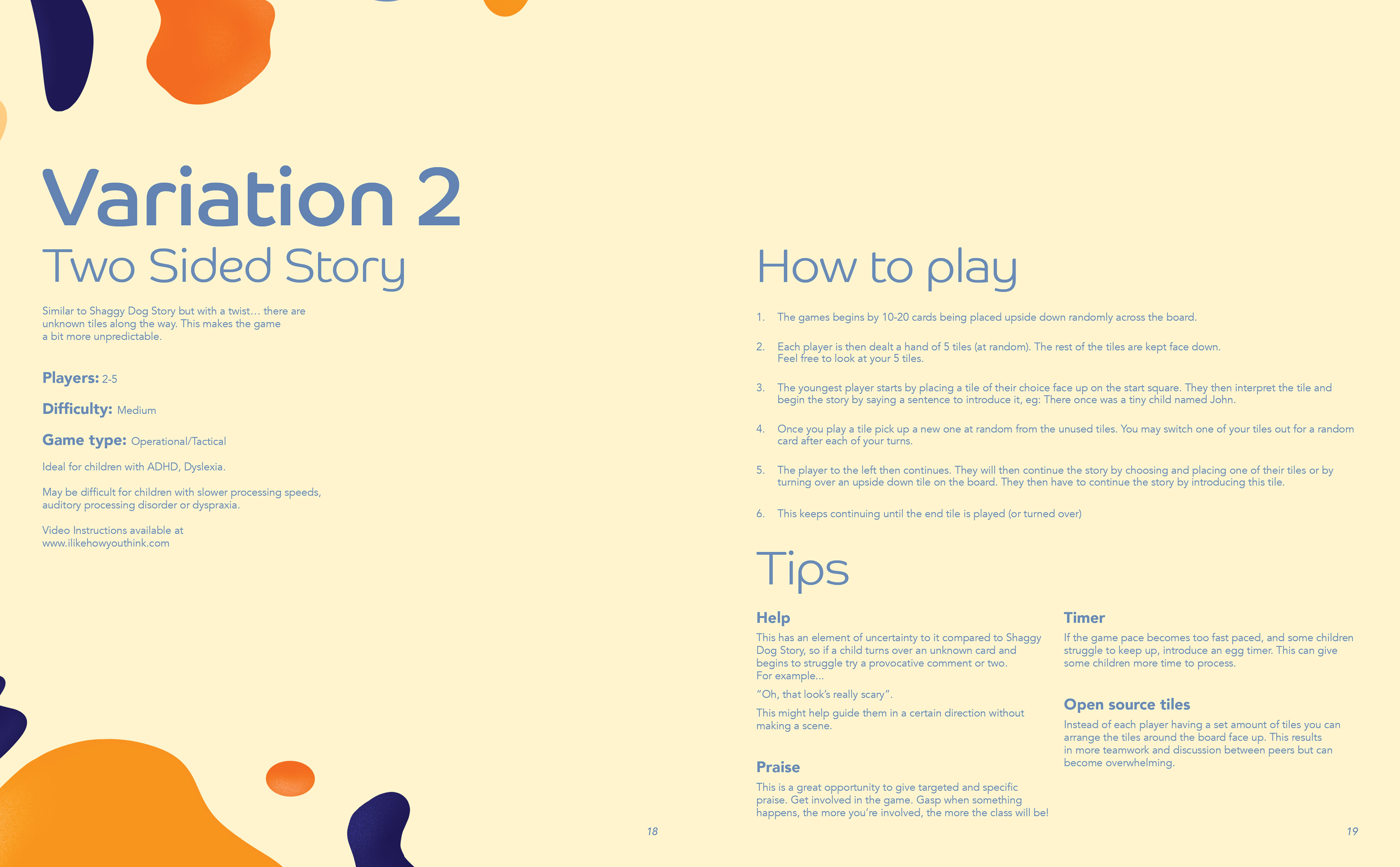
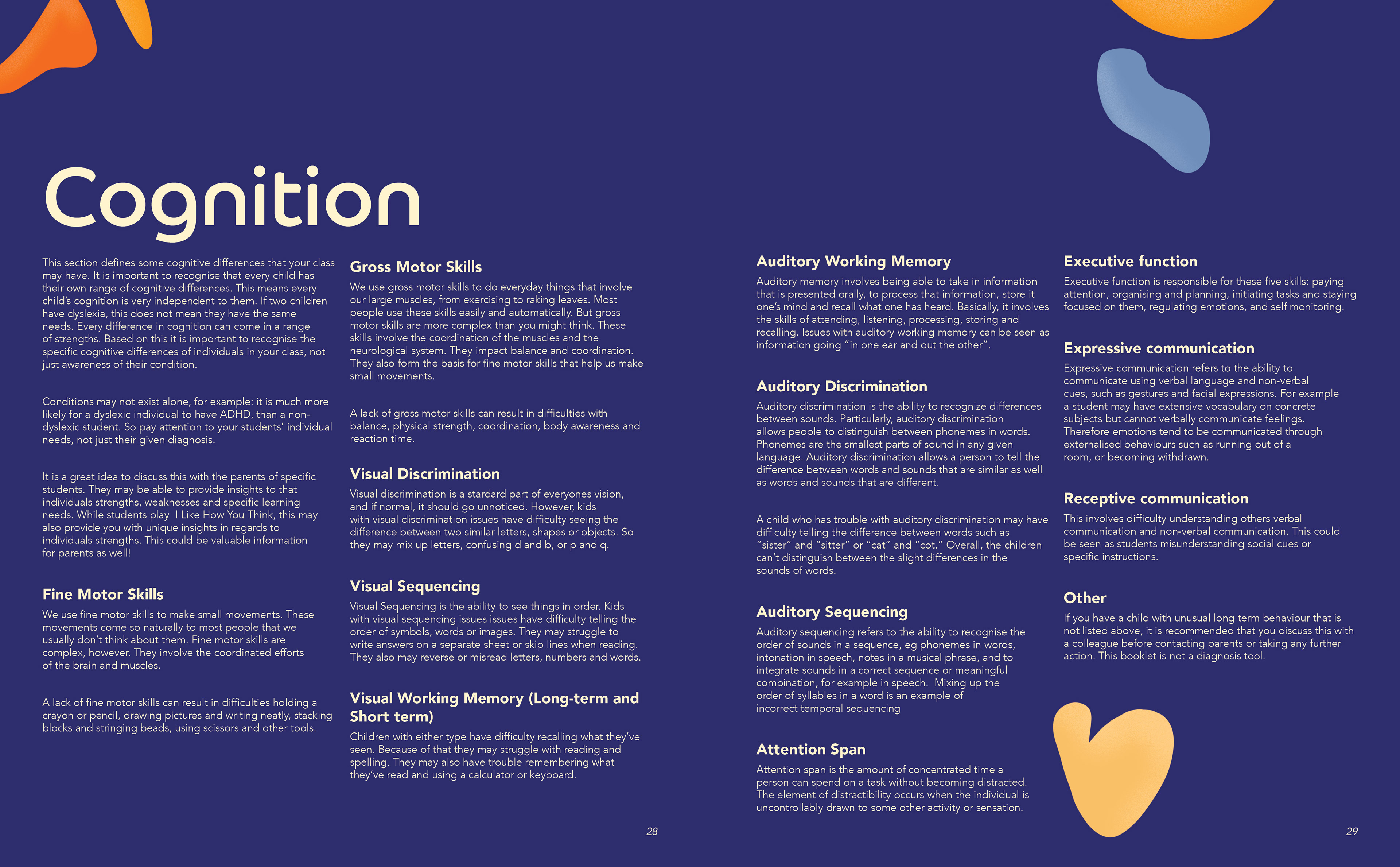
To improve accessibility the game introduction as well as all game instructions come in video format, which has verbal, visual and written information.
Here you can see a visualisation of all the components and the role they play in creating these positive, confidence building experiences for young learners.
Here is an example of gameplay. This shows a short segment of a story where a car crashed into a lake. The tiles used show a range of differing contributions, some players used more descriptive contributions, such as the noises and wide eyes, while others used more fundamental contributions such as the driving car. The tiles chosen are diverse in type, visual tiles have been used along side symbols and verbal tiles, as students have used what suits them. As well as this students have used the grid spatially, with the arrow showing the direction of the crash.
Reflection
This was a 24 week project, with a 12 week research component and a 12 week design component. This is the longest time I've worked in-depth on a project before. This enabled me to get more in-depth with research and user testing.
This was a huge project for me as a designer. This gave me the opportunity to develop my own brief, and follow through on an output. I am glad I had the patience and discipline to follow this through, while taking on a topic that was challenging for me. This was my first major experience with inclusive design, and it is because of this, that inclusivity is embedded in the core of this project, not just on a surface level. I would love to get more time with this, and try more user testing with where the final product got to. I feel there is room for this game in classrooms as a versatile educational tool.